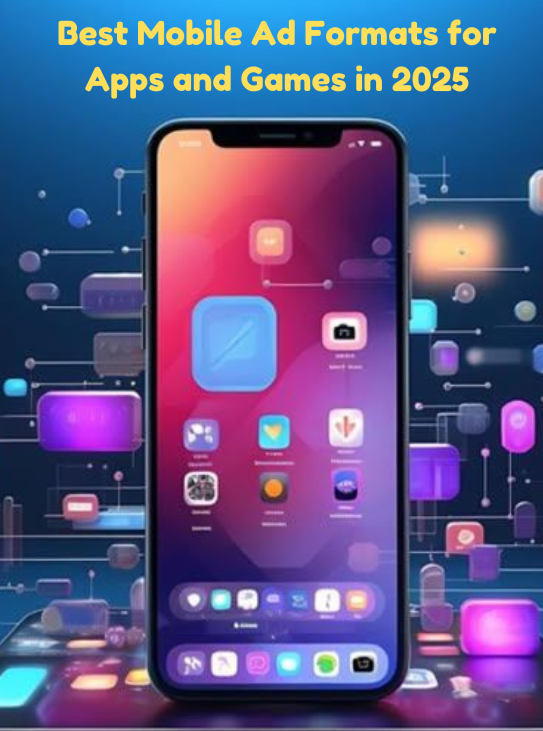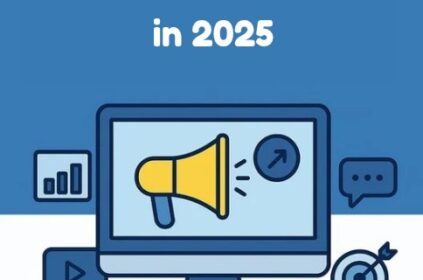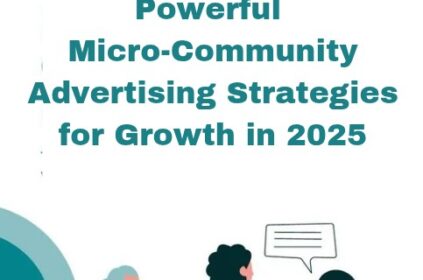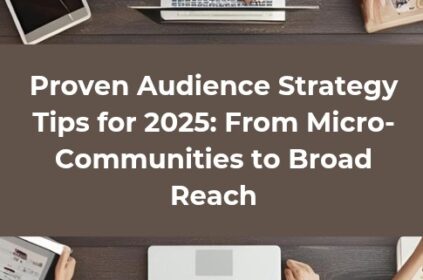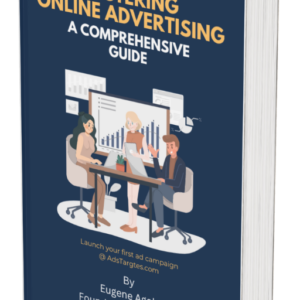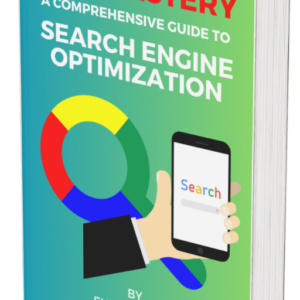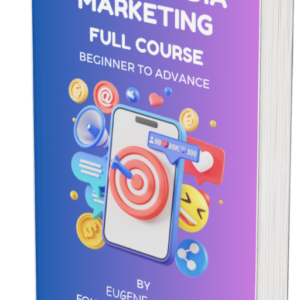Mobile advertising dominates digital spend—in-app placements alone are on track to absorb 82.3 percent of all mobile budgets this year, up 126 percent in five years.
Against that surge, competition for attention has intensified, and format choice now decides whether impressions convert or irritate.
Developers seeking the best mobile ad formats for apps and games must weigh revenue against retention, because app-store algorithms penalise churn while advertisers reward scale.
User behaviour is shifting too: global downloads hit 218 billion in 2024, with free titles making up 98 percent of installs.
Monetisation, therefore, hinges on ad inventory that feels native to play sessions rather than bolted-on billboards.
Add privacy changes, device-level ID restrictions, and stricter IAB attention-measurement guidelines released in May 2025 , and the stakes escalate.
With all that in mind, we distill what’s working right now, pairing hard data with creative playbooks so teams can deploy the best mobile ad formats for apps and games without sabotaging UX.
Why Format Choice Matters More Than Ever
Three macro trends are driving renewed scrutiny. First, eCPM inflation: rewarded ads, interstitials, and playables each posted double-digit CPM jumps last year, squeezing profit if fill rates dip.
Second, in-app bidding is displacing waterfall mediation, forcing networks to compete in real time and exposing weak creatives instantly. Unity’s decision to move “100 percent to bidding” by year-end underlines the pivot.
Third, attention metrics—dwell time, scroll depth, haptic interaction—are replacing legacy views/clicks, rewarding formats that keep eyes on screen.
Teams that align placements with these realities secure higher auction bids and steadier ARPDAU.
That’s why selecting the best mobile ad formats for apps and games is no longer just a design decision; it’s strategic revenue protection.
Rewarded Video Ads
Rewarded units remain the best mobile ad formats for apps and games when the goal is user-initiated engagement.
Average eCPMs hover between $10 and $50 per 1 000 impressions across top markets, per IronSource benchmarks.
Because users choose to watch in exchange for coins, lives, or content unlocks, completion rates exceed 90 percent, safeguarding retention even in hyper-casual titles.
Best Practices for Placement
Surface the opt-in button only after the player hits mild resistance—think an empty energy bar, a revive prompt after a close defeat, or a post-level reward multiplier—so the spot reads as genuine assistance rather than a shakedown.
Embed the CTA in UI colours and fonts to avoid “banner shock,” and add a short, silent preview GIF so users instantly grasp what they’ll earn.
Cap frequency at five rewarded views per user per day; beyond that, eCPM plateaus, session length falls, and store-rating complaints spike.
Layer a 30-second cool-down between impressions to keep binge-watchers from farming currency and crashing your economy.
Finally, stagger secondary rewards—for example, double coins after the third ad and a cosmetic skin after the fifth—to elevate view-through without inflating inflationary soft currency.
A/B-test these reward ladders monthly, because player fatigue changes with meta updates.
Executed together, these guidelines ensure rewarded video remains one of the best mobile ad formats for apps and games without torpedoing retention.
Performance Benchmarks to Track
Traditional eCPM is just the opener; the real story lives in engagement rate (ads watched ÷ ads offered), post-ad retention (day-1, day-7, and even day-14), and average session extension.
Start by segmenting first-time watchers versus veterans: newcomers often show 15-20 percent higher completion yet shorter sessions, signalling curiosity but not loyalty.
Track “time to next ad” to spot pacing problems—if users trigger another opt-in within 15 seconds, rewards may be undervalued.
Puzzle titles that rolled out rewarded video correctly recorded a four-point D1 lift and a 28-percent ARPDAU surge within two weeks, but only after aligning ad cadence with level length.
Pipe these KPIs into a real-time dashboard and set anomaly alerts at ±15 percent so product and monetisation teams can intervene before revenue dives.
When these metrics inform creative refresh, placement timing, and reward sizing, rewarded video secures its spot among the best mobile ad formats for apps and games at scale.
Playable Ads & Interactive End-Cards
Playable creatives—mini-demos a user can try before install—delivered conversion rates three times higher than standard video spots in recent programmatic tests.
Engagement, not passive watching, decides the winner: users sample core mechanics, priming installs that monetise faster.
For many studios, playables now rank among the best mobile ad formats for apps and games, especially for action and strategy titles where touch controls sell the fantasy better than footage.
Design Tips for Playables
Strip the demo down to a single, satisfying mechanic—swipe, tap-hold, or drag-drop—and let players master it in three moves or fewer.
Keep total interaction time under 20 seconds; anything longer hurts completion and spikes abandonment on spotty connections.
Auto-transition success states straight to the store with a punchy, two-word CTA like “Install Now” or “Play Free.” Skip full tutorials; cognitive overload decimates CTR.
Instead, surface a one-line tooltip (“Slice to Score”) and let muscle memory do the rest. Use lightweight, vector-based assets so file size stays below 2 MB, ensuring quick load even on 3G.
Add subtle haptic feedback on win states and end-card micro-animations—coin bursts, badge pops, level-up flashes—that mirror in-game rewards, cementing brand memory.
Localise text on the end-card, but keep the core interaction language-agnostic so global DSPs can syndicate fast.
Executed correctly, playable creatives become the quiet MVP among the best mobile ad formats for apps and games, blending user delight with marketer ROI.
Measuring Engagement Beyond Clicks
Clicks alone won’t tell you why a creative scales or stalls, so instrument deeper signals. Swipe depth—how far a user progresses through the playable—reveals interaction quality; a 100 percent swipe but zero installs means intrigue without intent.
Replay rate flags stickiness; a 15 percent replay bump often predicts 10-point conversion growth after creative polish. Track store-view-to-install ratio to isolate drop-offs caused by page design versus ad fatigue.
Overlay these metrics with cohort filters—country, OS, network—to uncover bid-price sweet spots. Pipe raw events into an analytics SDK and surface real-time dashboards so UA managers can pause underperforming variants within hours.
Feed engagement scores back to programmatic bidders; DSPs reward high-attention cohorts with cost-efficient inventory, compounding reach.
When these diagnostics loop into creative iteration and auction logic, playable ads graduate from novelty to cornerstone, proving why richly instrumented interactivity still ranks among the best mobile ad formats for apps and games for 2025 and beyond.
Interstitial & Full-Screen Ads
Interstitials generate punchy revenue spikes, but mis-timed impressions erode session length faster than any other format.
Still, they retain a place among the best mobile ad formats for apps and games when cadence aligns with natural pauses—level end, score screen, or fail-state.
Average global eCPMs for interstitials reached $8 on Android and $12 on iOS in Q1 2024, making them attractive fillers between rewarded placements.
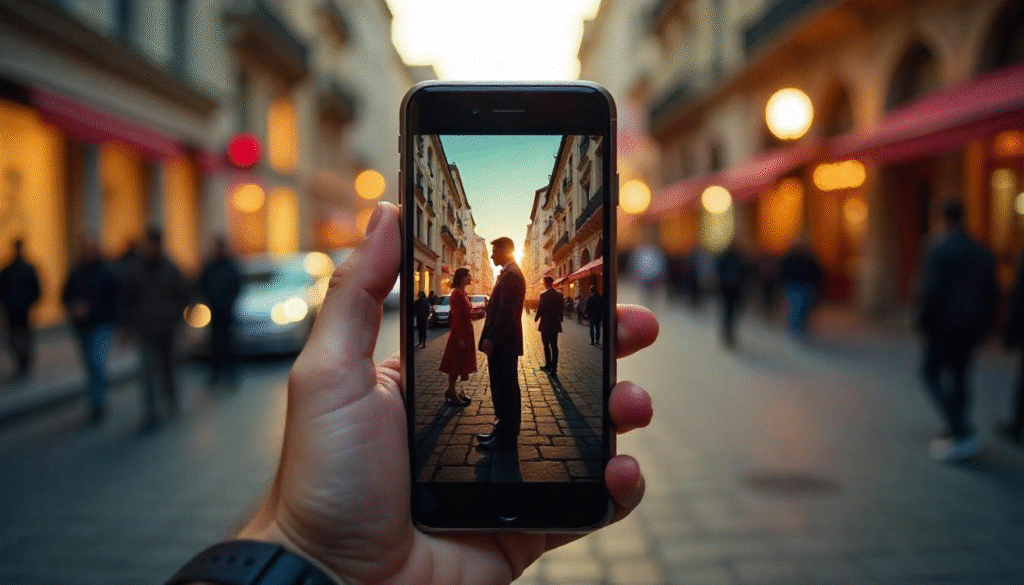
Frequency-Capping Strategies
Aim for one interstitial every two minutes of live gameplay or every third completed level, whichever arrives first, and treat that baseline as a ceiling, not a target.
Build adaptive caps that read game mode and player skill in real time: hardcore or timed-challenge users tolerate fewer breaks, while casual puzzle fans shrug off a slightly higher cadence.
Layer session-age logic so first-time users see at most two interstitials in the opening ten minutes, giving them room to attach before monetisation ramps.
For quality control, wire in pass-back logic—if the mediation stack surfaces a low-CPM or PSA campaign, abandon the call and queue the next eligible slot; this protects ARPDAU without bloating the impression count.
Finally, audit cumulative exposure: five interstitials per half-hour is a red flag for churn. With smart caps, elasticity by cohort, and yield-aware deferrals, interstitials keep their seat among the best mobile ad formats for apps and games while safeguarding retention and store ratings.
Creative Guidelines for Better Retention
Follow IAB’s latest ad-portfolio mandate for flexible, responsive sizes to avoid UI cut-offs on tablets, foldables, and 21:9 phones.
Target a 4:5 safe-zone ratio so your CTA and legal copy never vanish under notches or rounded corners.
Hard-limit runtime at 15 seconds, but front-load the brand cue in the first three; skip-after-five remains standard, yet shorter hooks curb exit taps.
Add shake-to-skip overlays for accessibility and motion-sensitive users, and localise end-screens down to currency symbol and app-store badge—geo-matched creatives scored 11 percent higher install intent in Meta Audience Network tests.
Compress assets with modern codecs like AV1 to cut load time 20–30 percent, particularly critical on prepaid data markets.
Insert silent autoplay by default, then escalate to audio only on user tap for compliance with Chrome’s muted-start policy.
By combining responsive layouts, concise runtimes, and regional polish, you keep interstitials firmly inside the best mobile ad formats for apps and games toolkit—without nudging uninstall buttons.
Banners, Native, and Adaptive Units
Banners lost glamour, yet they still vacuum incremental cents that stack into real dollars at scale.
Combined with adaptive native units that merge with feed cards, they form the best mobile ad formats for apps and games for long-tail inventory.
Adaptive banners automatically adjust height based on screen; tests show 18 percent higher viewability versus fixed 320×50 placements.
Combining Banners with Native Placements
Rotate lightweight banners—320 × 50 or adaptive 50–90 dp units—during low-intensity gameplay like idle loops or loading spinners, while reserving native cards for high-attention zones such as menus, inventory screens, and leaderboards.
This sequencing matches ad intrusiveness to cognitive load, lifting viewability without denting flow.
Keep visual consistency tight: mirror the game’s primary font, button radius, and colour palette so banners feel like extension panels rather than foreign objects, a tactic that reduces “banner blindness” by up to 27 percent in A/B tests from AdMob Labs.
For native cards, run copy that dovetails with on-screen context—“Need more gems?” beside the currency balance, or “Unlock the next skin” on a cosmetic page—so the placement doubles as a soft upsell.
Tie both formats into a shared frequency cap, then randomise the first impression type per session to avoid pattern fatigue.
Executed together, banners and natives become complementary pillars inside the best mobile ad formats for apps and games monetisation mix.
Using IAB Responsive Sizes Correctly
Implement IAB’s flexible-ad-size grid to future-proof creatives across phones, tablets, and foldables.
Stick to a 6:1 width-to-height ratio for leaderboard-style top bars and approximately 1:1.5 for mid-page blocks; these ratios auto-scale while preserving legibility.
Embed responsive code snippets—data-ad-format=”auto” for AdSense or “fluid” for GAM—so the SDK chooses the optimal slot in real time, shrinking design debt when new screen classes launch.
Responsive compliance widens auction eligibility because more demand partners recognise the tag, pushing auction density higher and lifting banner CPMs toward parity with video and playables.
It also aligns with forthcoming AR/VR guidelines that treat ad surfaces as resizable canvases. Test render speed with Google Lighthouse, aiming for a Largest Contentful Paint under 2 s even on 3G; heavy banners drag the whole slot’s score.
When size rules, lazy-loading, and network bidding converge, banners stay viable in low-ARPU geos, preserving a balanced stack of the best mobile ad formats for apps and games worldwide.
In-App Bidding, Hybrid Formats, and the Road Ahead
Waterfalls are phasing out. Programmatic guides estimate 70 percent of the top-grossing 500 apps already employ unified auctions, with Unity Ads pledging full transition this year.
Bidding lifts average revenue per user by 7-12 percent by eliminating pass-back latency. Coupled with hybrid formats—video-plus-playable end-cards, AR try-ons—developers gain new ways to present the best mobile ad formats for apps and games without ballooning SDK footprints.
Preparing for Attention-Metric Compliance
IAB’s 2025 attention guidelines count an impression only when 50 percent of the creative is in view for at least two full seconds and the user triggers an active focus event—a scroll pause, touch, or haptic cue.
To hit that bar consistently, build eye-tracking proxies into the client: log scroll velocity, finger dwell time, gyroscope tilt, and even audio-focus changes when headphones connect.
Stitch those signals into a single “attention score” and stream it back with the impression beacon so supply-side platforms can validate in real time.
Surface the metric on an internal dashboard sorted by placement, creative ID, and cohort to spot under-performing slots before bid-price penalties bite.
Favour formats that naturally hold gaze—rewarded video, playables, and longer native cards—because they clear the threshold effortlessly and qualify for premium CPM tiers as soon as exchanges flip the switch.
By hard-wiring compliance now, you future-proof the revenue stream tied to the best mobile ad formats for apps and games instead of scrambling later.
Choosing the Right Tech Stack
Start with a mediation layer that offers hour-level reporting granularity, automated A/B creative rotation, and server-to-server bidding so you can swap networks without new SDK drops.
Prioritise adapters that return raw log files; aggregated dashboards hide anomalies that drain ARPDAU. Pair mediation with a lightweight, event-driven analytics SDK—under 500 KB compiled size—to track net ads watched, reward claims, and post-ad retention per user.
Push that data into your BI warehouse via a streaming pipeline (Kafka or Pub/Sub) so cohort lifetime value updates nightly.
Inside the warehouse, join ad events to purchase and churn tables to pinpoint the effective frequency curve for each country-device segment.
Layer a creative-performance API on top so UA managers can pause low-ROI units directly from Slack.
Finally, enforce version-control tags on every SDK upgrade to isolate crashes fast. This visibility makes it possible to optimize the best mobile ad formats for apps and games across geos, devices, and user segments without flying blind.
Conclusion
No single placement rules every genre; profitability emerges from synergy. Rewarded videos anchor opt-in monetisation, playable ads turbocharge UA funnels, interstitials fill gaps when timed with natural breaks, and banners/native units monetise downtime without hogging RAM.
In-app bidding, backed by rigorous attention metrics, maximises demand across them all. Together, these elements form the best mobile ad formats for apps and games blueprint that balances revenue, retention, and regulatory headwinds.
As privacy frameworks tighten and AI-generated creatives scale variations overnight, the winners will iterate weekly, measuring not just clicks but post-ad stickiness.
Prioritise user choice, responsive design, and data-driven frequency rules, and your format stack will thrive long after 2025’s trends become baseline expectations.

